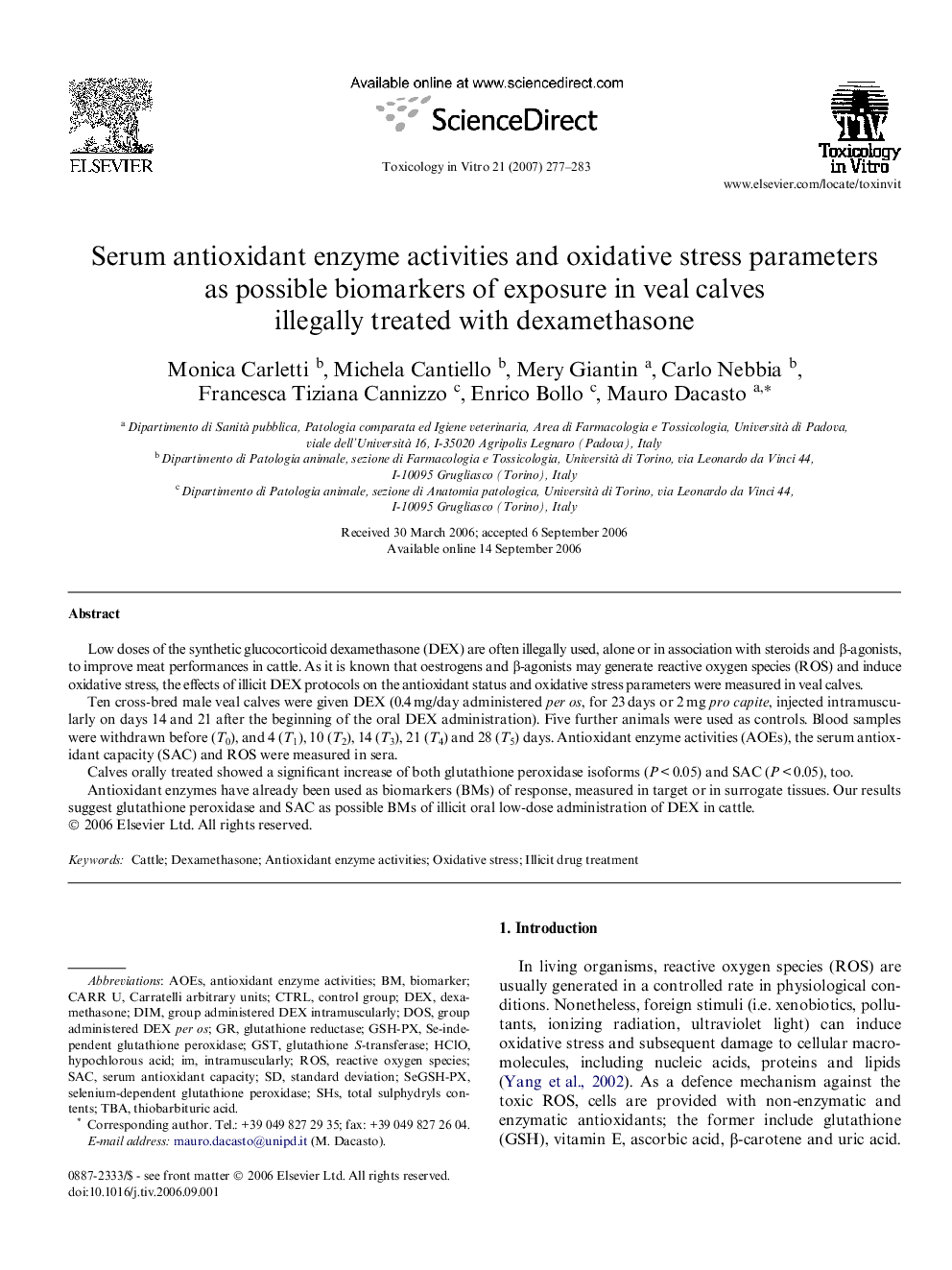| Article ID | Journal | Published Year | Pages | File Type |
|---|---|---|---|---|
| 2603883 | Toxicology in Vitro | 2007 | 7 Pages |
Low doses of the synthetic glucocorticoid dexamethasone (DEX) are often illegally used, alone or in association with steroids and β-agonists, to improve meat performances in cattle. As it is known that oestrogens and β-agonists may generate reactive oxygen species (ROS) and induce oxidative stress, the effects of illicit DEX protocols on the antioxidant status and oxidative stress parameters were measured in veal calves.Ten cross-bred male veal calves were given DEX (0.4 mg/day administered per os, for 23 days or 2 mg pro capite, injected intramuscularly on days 14 and 21 after the beginning of the oral DEX administration). Five further animals were used as controls. Blood samples were withdrawn before (T0), and 4 (T1), 10 (T2), 14 (T3), 21 (T4) and 28 (T5) days. Antioxidant enzyme activities (AOEs), the serum antioxidant capacity (SAC) and ROS were measured in sera.Calves orally treated showed a significant increase of both glutathione peroxidase isoforms (P < 0.05) and SAC (P < 0.05), too.Antioxidant enzymes have already been used as biomarkers (BMs) of response, measured in target or in surrogate tissues. Our results suggest glutathione peroxidase and SAC as possible BMs of illicit oral low-dose administration of DEX in cattle.
